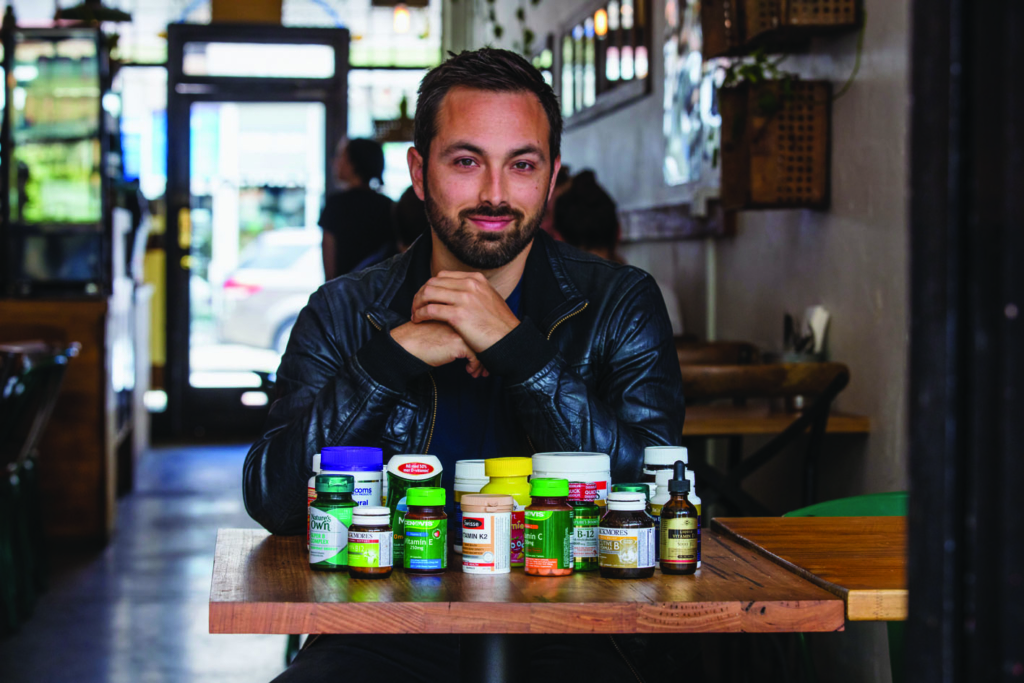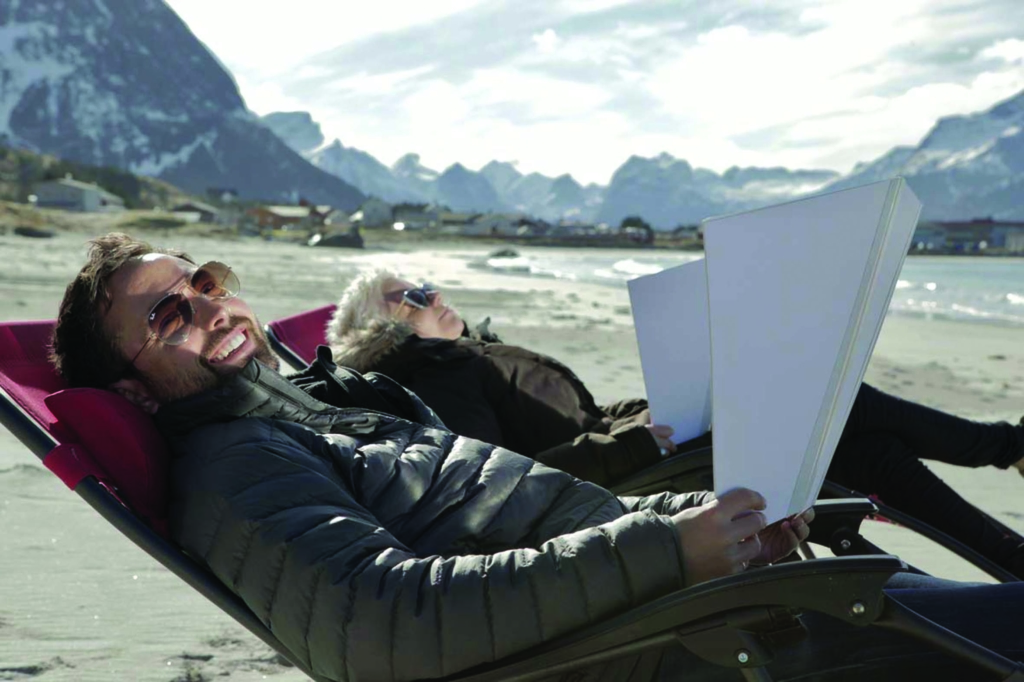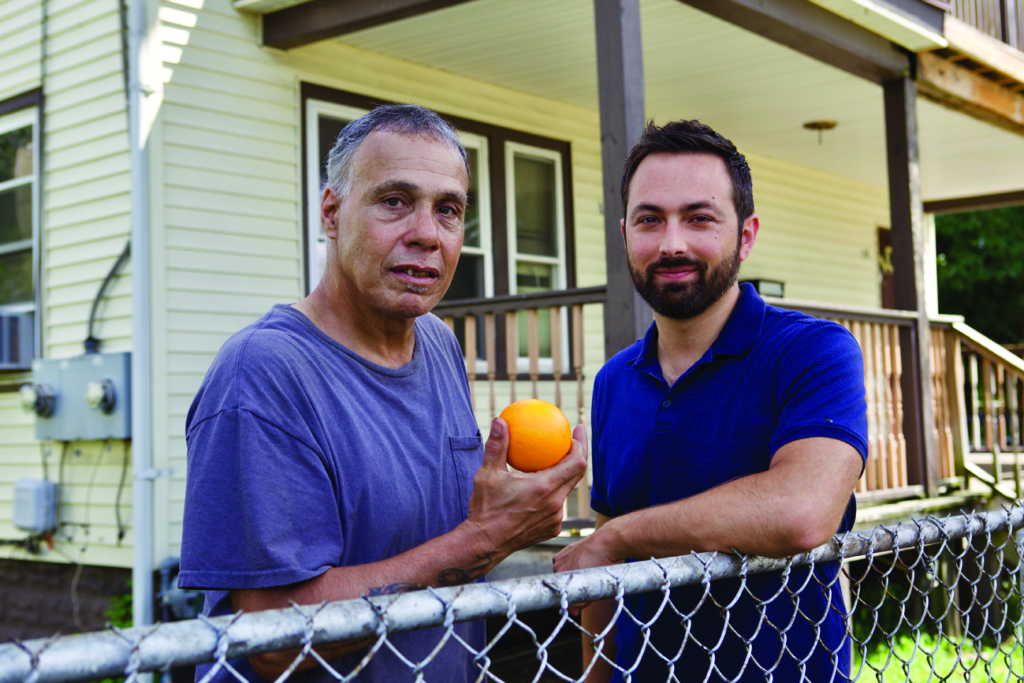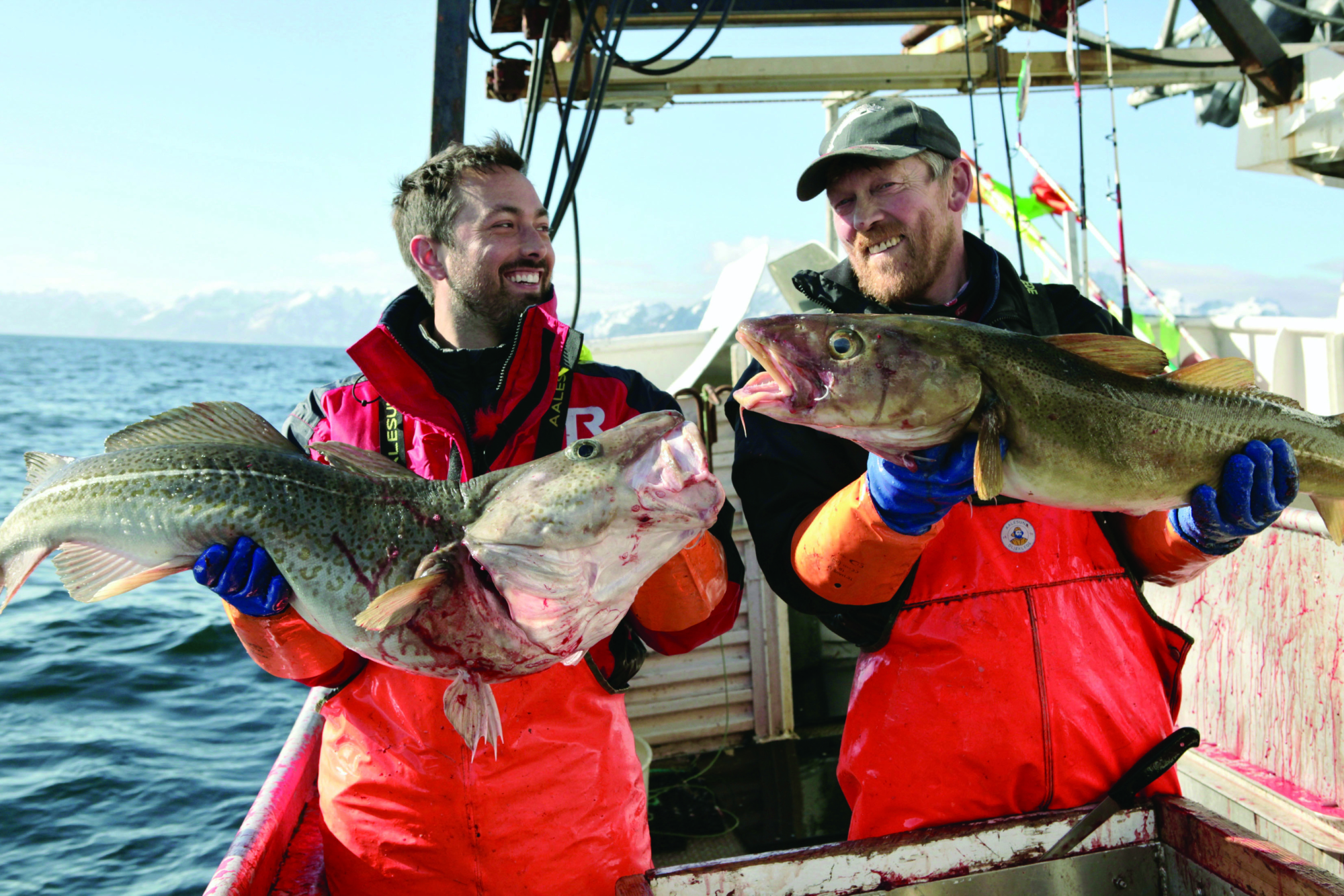In this era of entertainment oversaturation, when films can live or die on word-of-mouth praise, the documentary is having a mini moment. Showing in Australian cinemas at the time of writing are blockbuster documentaries on two fashion luminaries (McQueen, Ian Bonhôte, 2018; Westwood: Punk, Icon, Activist, Lorna Tucker, 2018) and one on US President Donald Trump (Fahrenheit 11/9, 2018) by pop-doco superstar Michael Moore. Time reports that, over the 2018 American summer alone, three US documentaries with theatrical releases – Morgan Neville’s Won’t You Be My Neighbor?, Julie Cohen and Betsy West’s RBG, and Tim Wardle’s Three Identical Strangers – collectively grossed US$45.7 million at the domestic box office.[1]Stephanie Zacharek, ‘How Documentaries Became the Hottest Genre of the Summer’, Time, 23 August 2018, <http://time.com/5375692/summer-documentaries/>, accessed 2 November 2018. And online it’s no different: streaming services Netflix, Stan and their competitors have stocked up on a cache of documentaries on everything from the murder of child-pageant star JonBenét Ramsey (Casting JonBenet, Kitty Green, 2017) to the phenomenon of relationships with sizeable age differences (Netflix’s Age Gap Love).
Among these expansive interest areas, there’s always a special spot in our hearts for what might be categorised as ‘pop-health’ docos: films exploring subjects in the health-sciences sector that are of great interest to the general population. Vitamania: The Sense and Nonsense of Vitamins (2018), the latest film from Australia’s own Emmy Award–winning documentarian and Genepool Productions creative director Sonya Pemberton, is sure to be the next pop-health film to put the fear of god in all of us. Because that’s really what makes these pop-health films hits: they take a ubiquitous part of our everyday lives and expose the dangers lurking beneath. In Vitamania, Pemberton teams up again with popular Australian-Canadian physicist and science communicator Derek Muller, who presented the 2015 Genepool miniseries Uranium: Twisting the Dragon’s Tail, to pull back the curtain on the multi-billion-dollar vitamin and supplement industries. And, though viewers may not be entirely surprised by the conclusions Vitamania draws, what’s presented is nonetheless sure to fascinate.

Information in the right doses
It’s easy to see why pop-health content across media forms consistently stirs audiences’ interest. After all, it’s not just fear that draws us in but also the desire to be educated – public understanding of science and health is, in general terms, concerningly low,[2]For instance, around 59 per cent of Australians have below-adequate health literacy; see Australian Institute of Health and Welfare, ‘Health Literacy’, Australia’s Health 2018, 20 June 2018, <https://www.aihw.gov.au/reports/australias-health/australias-health-2018/contents/indicators-of-australias-health/health-literacy>, accessed 2 November 2018. though it has been steadily climbing in Australia for at least the past decade.[3]See Rod Lamberts, The Australian Beliefs and Attitudes Towards Science Survey, The Australian National University, Canberra, 2017, <http://cpas.anu.edu.au/files/Lamberts%202017%20The%20Australian%20Beliefs%20and%20Attitudes%20Towards%20Science%20Survey.pdf>, accessed 16 November 2018. In literature, bestsellers like Giulia Enders’ Gut and Norman Doidge’s The Brain That Changes Itself have each provided us with an intoxicating mix of information and entertainment in areas about which we’re often perilously ill-informed. On the doco front, the last big success was Australian actor-turned-director Damon Gameau’s local hit That Sugar Film (2014), which investigated the impacts of refined sugar on our food production and general wellbeing. In the tradition of Super Size Me (Morgan Spurlock, 2004), the film shows Gameau going gonzo and subjecting himself to the Australian dietary standard of forty teaspoons of refined sugar a day[4]Damon Gameau, ‘I Ate 40 Teaspoons of Sugar a Day. This Is What Happened’, The Telegraph, 27 June 2015, <https://www.telegraph.co.uk/foodanddrink/healthyeating/11691125/I-ate-40-teaspoons-of-sugar-a-day.-This-is-what-happened.html>, accessed 2 November 2018. to measure its effects on his body.
Interspersed throughout the experience is Gameau’s investigation into the various insidious ways refined sugars infiltrate our diets. He discovers how an apple is perfectly engineered to give consumers the right amount of sugar, nutrients and dietary fibre, and travels to a small town in Kentucky where Mountain Dew is destroying the teeth of dozens of young Americans. At the film’s end, we see how Gameau’s ‘health-conscious’ but high-sugar diet has actually caused him to gain weight, grow lethargic and contract fatty liver disease (all of which are quickly reversed once he ends the experiment). ‘Sugar isn’t evil,’ Gameau concludes, ‘but life is so much better when you get rid of it.’
It’s easy to see why pop-health content across media forms consistently stirs audiences’ interest. After all, it’s not just fear that draws us in but also the desire to be educated – public understanding of science and health is, in general terms, concerningly low.
That Sugar Film garnered generally positive reviews, including in the US,[5]See Don Groves, ‘That Sugar Film Wows US Critics’, IF.com.au, 2 August 2015, <https://www.if.com.au/that-sugar-film-wows-us-critics/>, accessed 2 November 2015. where refined sugar consumption is off the charts.[6]Roberto A Ferdman, ‘Where People Around the World Eat the Most Sugar and Fat’, The Washington Post, 5 February 2015, <https://www.washingtonpost.com/news/wonk/wp/2015/02/05/where-people-around-the-world-eat-the-most-sugar-and-fat/>, accessed 2 November 2018. But Gameau’s film did face some pushback from critics like Slate’s Daniel Engber, who argued that it presents ‘radical ideas – most without any evidence’ as fact, successfully passing them off by putting ‘a pinch of data into the blender’ to create ‘a thick and creamy anecdote spiced with speculation’.[7]Daniel Engber, ‘That *#^$ Sugar Film’, Slate, 10 August 2015, <https://slate.com/technology/2015/08/that-sugar-film-science-debunking-links-to-mood-health-fatty-liver-disease-acne.html>, accessed 2 November 2018. This type of criticism stems from the fact that pop-health documentaries, when presenting sensitive data, rely on flashy film techniques, so-called experts and scientific vernacular – tools that a vulnerable audience may be unable to see through.
Pemberton seems to understand all this and, thus, has sought to infuse Vitamania with at least an illusion of even-handedness. As fronted by Muller, who possesses a kindly, hip science-teacher sensibility, the film initially plays as genial history lesson: our presenter runs us through the (partial) story of vitamin discovery, right back to the days of clinical control trials for scurvy on British Royal Navy boats. Each of these mini-accounts of vitamin science’s past is anchored by a Nobel Prize victory for added authenticity. There’s even an exceedingly goofy troubadour who follows Muller on his adventures, concocting daffy songs about science history and water-soluble-vitamin power.

In aiming so hard for balance and affability, Vitamania almost fails to make its point. Still, this even-handedness works because the film’s subject matter centres on a swirling set of polarising claims that haven’t yet been resolved within the scientific community. In fact, the question that Vitamania seeks to answer – whether we need this global US$100-billion-per-year industry of vitamins and supplements in order to prevent disease or fill gaps in our nutrition – is still the subject of furious discussion among scientists, chemical engineers and doctors, which makes Pemberton’s job of providing a satisfying conclusion rather difficult. But she still makes a go of it. Among the history lessons, Vitamania addresses various controversial advancements in the world of vitamin production: food fortification, the development of the multivitamin and the current, prominent debate about the utility of vitamin D supplements.
Vitamania also features the usual scary-study stories that dominate documentaries of its ilk; here, though, they’re often literally told by a weeping mother via a talking-head interview. Muller speaks to the family of a wheelchair-basketball champion whose prenatal spinal-cord disease resulted from a lack of folate in his mother’s diet. (Folate is now added to Australian bread flour, and women trying for pregnancy are encouraged to take folate supplements.[8]‘Folate for Pregnant Women’, Better Health Channel, September 2015, <https://www.betterhealth.vic.gov.au/health/HealthyLiving/folate-for-pregnant-women>, accessed 2 November 2018.) He also visits a mother who accidentally poisoned her infant daughter with an overdose of vitamin D in her homemade formula – one of the film’s more distressing moments. Each of these case studies gingerly mounts the scales on either side of the debate: sometimes, fortifying our diets with additional vitamins can vastly improve a child’s life; at other times, doing so can almost end it. One imagines Pemberton behind the scenes, studiously weighing up perspectives so as to maintain this sense of balance that Vitamania projects.
Different levels of potency
Vitamania is most compelling when it wades into the contemporary debates surrounding supplement use. These are saved for the end of the film, however, perhaps because they’re the most complex and murky aspect of the health-science discourse tackled over its ninety-minute running time. As someone who’s intensely followed the (often conflicting) reports of those studying the utility of vitamin D supplements, I was interested to see Pemberton and Muller chime in there – or rather, expose the indecision in the scientific community about vitamin D’s value. I was also shocked by the film’s revelations about how little the vitamin and supplement industries are regulated by national and international food and drug bodies, even less so since supplement purchasing has boomed online.
Vitamania … fails to really hammer home any strong conclusions about the vitamin mega-industry beyond the obvious: we should all be eating more healthily instead of just taking vitamins, and seek supplement advice from our doctors first.
Speaking to The Australian, Pemberton reveals that the idea behind Vitamania arose from her earlier film Jabbed: Love, Fear and Vaccines (2013). She reflects on how the same people who oppose vaccination
often said they ‘took vitamins’ and sometimes gave them to their children because, despite not knowing what vitamins were, where they came from, how they were made and regulated, they perceived significant benefit and no risk.[9]Sonya Pemberton, quoted in Graeme Blundell, ‘Sonya Pemberton Puts Vitamins Through the Mill’, The Australian, 11 August 2018, <https://www.theaustralian.com.au/arts/review/sonya-pemberton-puts-vitamins-through-the-mill/news-story/21fcb8bb4990cbd403181f0b12c27893>, accessed 2 November 2018.
Jabbed – another pop-health documentary, albeit one that packs a far greater punch than Vitamania – is sharply put together: at one point, viewers are compelled to watch for around thirty seconds as a baby with whooping cough relentlessly hacks and struggles. Perhaps it’s just that the stories in Jabbed are more dire than those in Vitamania, but the latter’s pursuit of balanced coverage somewhat removes the bite from the documentary, which fails to really hammer home any strong conclusions about the vitamin mega-industry beyond the obvious: we should all be eating more healthily instead of just taking vitamins, and seek supplement advice from our doctors first.

However, it’s within this conclusion that the most interesting observations of Vitamania reside, pointing to the socio-economic barriers to proper nutrition and our critical lack of information about how to keep our bodies healthy. At one point, Muller visits an older man from Massachusetts, Sonny Lopez, who lives in poverty and suffers serious malnutrition and scurvy – the disease most commonly associated with eighteenth-century naval ships. For people like Sonny, it’s often a lack of education in the basics of well-rounded nutritional habits or a difficult socio-economic situation that prevent them from being able to prioritise healthy eating; while Muller and Pemberton touch on this, the issue of the relationship between class and health is, critically, not revisited. Vitamania often teeters on the edge of investigating these wider, more deeply rooted societal issues – it’s been widely acknowledged that those in dire need of vitamin and supplement assistance are the very people who cannot access or afford their benefits[10]See, for example, DS Grimes, ‘Vitamin D and the Social Aspects of Disease’, QJM: An International Journal of Medicine, vol. 104, no. 12, 2011, pp. 1065–74, available at <https://academic.oup.com/qjmed/article/104/12/1065/1545355>, accessed 16 November 2018. – but its preference for a more toothless examination of Big Vitamin prevents what might have been a far more interesting and essential film from emerging.
Perhaps, as with Jabbed, Vitamania’s exploration of the value of synthetic supplements and vitamin-infused superfoods will lead Pemberton onto her next project: a more encompassing film on our need to learn how to eat properly and aspire to healthier and more productive lives.
https://www.vitamaniathemovie.com
Endnotes
| 1 | Stephanie Zacharek, ‘How Documentaries Became the Hottest Genre of the Summer’, Time, 23 August 2018, <http://time.com/5375692/summer-documentaries/>, accessed 2 November 2018. |
|---|---|
| 2 | For instance, around 59 per cent of Australians have below-adequate health literacy; see Australian Institute of Health and Welfare, ‘Health Literacy’, Australia’s Health 2018, 20 June 2018, <https://www.aihw.gov.au/reports/australias-health/australias-health-2018/contents/indicators-of-australias-health/health-literacy>, accessed 2 November 2018. |
| 3 | See Rod Lamberts, The Australian Beliefs and Attitudes Towards Science Survey, The Australian National University, Canberra, 2017, <http://cpas.anu.edu.au/files/Lamberts%202017%20The%20Australian%20Beliefs%20and%20Attitudes%20Towards%20Science%20Survey.pdf>, accessed 16 November 2018. |
| 4 | Damon Gameau, ‘I Ate 40 Teaspoons of Sugar a Day. This Is What Happened’, The Telegraph, 27 June 2015, <https://www.telegraph.co.uk/foodanddrink/healthyeating/11691125/I-ate-40-teaspoons-of-sugar-a-day.-This-is-what-happened.html>, accessed 2 November 2018. |
| 5 | See Don Groves, ‘That Sugar Film Wows US Critics’, IF.com.au, 2 August 2015, <https://www.if.com.au/that-sugar-film-wows-us-critics/>, accessed 2 November 2015. |
| 6 | Roberto A Ferdman, ‘Where People Around the World Eat the Most Sugar and Fat’, The Washington Post, 5 February 2015, <https://www.washingtonpost.com/news/wonk/wp/2015/02/05/where-people-around-the-world-eat-the-most-sugar-and-fat/>, accessed 2 November 2018. |
| 7 | Daniel Engber, ‘That *#^$ Sugar Film’, Slate, 10 August 2015, <https://slate.com/technology/2015/08/that-sugar-film-science-debunking-links-to-mood-health-fatty-liver-disease-acne.html>, accessed 2 November 2018. |
| 8 | ‘Folate for Pregnant Women’, Better Health Channel, September 2015, <https://www.betterhealth.vic.gov.au/health/HealthyLiving/folate-for-pregnant-women>, accessed 2 November 2018. |
| 9 | Sonya Pemberton, quoted in Graeme Blundell, ‘Sonya Pemberton Puts Vitamins Through the Mill’, The Australian, 11 August 2018, <https://www.theaustralian.com.au/arts/review/sonya-pemberton-puts-vitamins-through-the-mill/news-story/21fcb8bb4990cbd403181f0b12c27893>, accessed 2 November 2018. |
| 10 | See, for example, DS Grimes, ‘Vitamin D and the Social Aspects of Disease’, QJM: An International Journal of Medicine, vol. 104, no. 12, 2011, pp. 1065–74, available at <https://academic.oup.com/qjmed/article/104/12/1065/1545355>, accessed 16 November 2018. |





